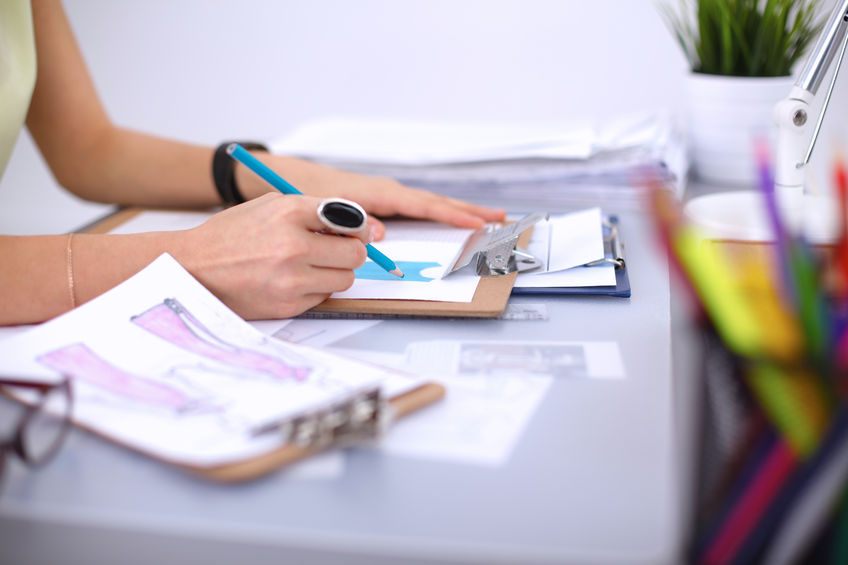What New Clinical Research Tells Us About the Link Between Imagination & Physical Fitness
From my perspective, one of the most innovative panels of the 2016 SxSW Interactive Festival was not about an emerging technology or a cutting-edge gadget, but rather about very modern ideas that (paradoxically) harken back to the earliest forms of self-expression. The panel gathered experts from various fields to highlight the power of dance, music and art to revolutionize healthcare and improve outcomes.
The panel’s organizer, Amy Li, founded Dance4Healing, a platform that provides cancer patients with free access to dance classes in their homes, at the hospital or in person. The platform is based on the idea that providing people with a creative outlet improves health outcomes and generally helps them feel better. Li created the program based on her own experience as a stage 4 cancer survivor, and it turns out there’s actually a great deal of evidence for the healing abilities of the arts.
A recent study of people undergoing cancer treatment demonstrated that Creative Arts Therapy reduced pain, depression and anxiety, and improved quality of life. These findings are not unique. A quick search turns up dozens of studies on the effectiveness of creativity in improving health or quality of life for everything from asthma, to epilepsy, diabetes, fertility and stress.
Why Creativity Works
Several theories help to explain why creativity improves health: according to a 2014 study in Germany, the act of art production increases the connectivity between parts of the brain. This helps to improve cognition and what the study authors term “psychological resilience”: “…a protective personality characteristic that allows individuals to control negatives effects of stress, and thus enables successful and healthy functioning, even in a stressful life condition.”
That may be because there’s something about the creative process that forces us into an elevated state of focus — much like the experience of meditation. It’s this personal introspection and exploration that ties to one of our most basic human needs: self-actualization. Self- actualization is about a longing for bigger meaning, and the pursuit of knowledge and creativity. It is this higher-order connection with ourselves that engaging in creative arts liberates. As such, the concept of self-actualization was made popular by Abraham Maslow as the pinnacle of the human hierarchy of needs.
It’s not just a connection with ourselves that the production of art releases, however. Creativity can help improve a connection with others, similar to the dialogue between doctors and patients. Dr. Steven Eisenberg, a participant on the SxSW panel, is known as the “singing oncologist.” Dr. Eisenberg co-creates songs with his patients to help both himself and his patients manage the exhausting and sometimes painful process of treating cancer. The songs bring joy and foster a personal connection — another of Maslow’s basic needs.
Simply Looking at Art Works, Too!
More intriguing news: it is still possible to get the health benefits of art without actually participating in the creative process. In a series of experiments, neurobiologist Professor Semir Zeki showed that just viewing art can help us feel good. Professor Zeki and his team showed a series of images of works of art to participants. These included a range of famous works such as The Birth of Venus by Sandro Botticelli and Bathing at La Grenouillere by Claude Monet. Zeki found that viewing these works of art released dopamine and increased activity in the brain’s frontal cortex. They also found that this brain activity not only simulates the feeling of being in love, but the results are immediate.
And it seems that appreciating almost any type of art is good for health: other studies have shown that listening to music, going to the theater or looking at a painting all helped improve the quality of life for patients recovering from stroke or living with Alzheimer’s.
Make Creativity Part of Your Everyday Routine
With the growing epidemic of stress-related illnesses and consequential visits to the doctor (valued at approximately $300 billion each year), we likely could all benefit from a little bit of art in our lives. A busy schedule of personal and professional commitments may not always allow for time for a dance class or an evening at the theater, but that doesn’t mean we can’t find some way to benefit from creativity. Since the impact of art seems to be immediate, try some of these to work a little bit of the arts into your everyday timetable:
-
-
- Listen to music on the way to work
- Include a photograph or painting in your work space
- Keep a pack of colored pencils in your drawer and doodle during a conference call (it’s a form of art that also helps to increase focus and memory)
-
Just small steps of incorporating the power of imagination into your regular schedule can have far-reaching consequences for your psyche and health. And the best part? It’s a gift that keeps on giving – for as poet Maya Angelou observed: “You can’t use up creativity. The more you use, the more you have.”
10 Interviewer Interview Prep
Interviewer Interview Prep Impactful Mentees
Impactful Mentees Benefits of a Mentor
Benefits of a Mentor Advice for First-Time Managers
Advice for First-Time Managers Overcoming the 18-month Itch
Overcoming the 18-month Itch Dressing for Your Style
Dressing for Your Style Interview Style Tips
Interview Style Tips Women's Stocking Stuffers
Women's Stocking Stuffers Gift the Busy Traveler
Gift the Busy Traveler Father’s Day Gift Guide
Father’s Day Gift Guide Airport Layover Activities
Airport Layover Activities Traveling & Eating Healthy
Traveling & Eating Healthy Travel Like a Boss Lady
Travel Like a Boss Lady The Dual California Life
The Dual California Life Gifts for Thanksgiving
Gifts for Thanksgiving Summer Reading List
Summer Reading List Top Leisurely Reads
Top Leisurely Reads New Year, New Books
New Year, New Books Life Lessons from a Sitcom
Life Lessons from a Sitcom Oprah, Amy or Amal?
Oprah, Amy or Amal?






